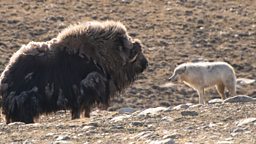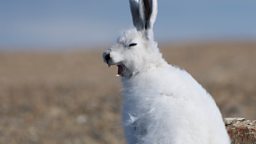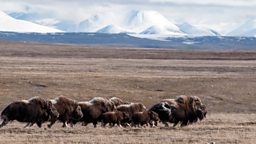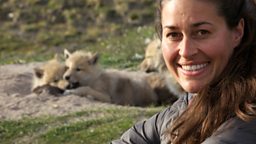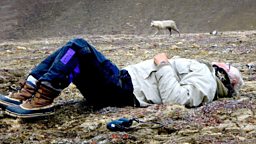Arctic wildlife in a warming world
Michael Becker
I’m a polar scientist at McGill University in Montreal, Canada, studying how our planet’s changing climate is affecting the polar desert ecosystem of the Canadian High Arctic. I joined a team of wolf researchers and a 大象传媒 film crew to spend three months in a tent on the tundra as we tried to document the lives of a pack of wild wolves.
Ellesmere Island, in the extreme Northern end of the Arctic, is a land of 24-hour summer sun and 24-hour winter darkness, where a combination of wind and cold can drive temperatures below minus 50 Celsius. It experiences calm, golden summer evenings, and raging storms where blowing ice crystals cut apart the vegetation. It is beautiful and inviting, but minutes later, it can become one of the most hostile places in the world.
Part of my job, as someone with local knowledge of working on Ellesmere, was to help the crew with a range of tasks, as well as with the camera equipment and field kit. We faced numerous challenges: 100+km quad bike journeys over rugged tundra, hordes of mosquitos, and unpredictable rutting muskoxen around camp. But by setting up a self-reliant field camp, we were able to live amongst the wolves – monitoring them, filming them, and cataloguing their behaviour.
It was their behaviour towards us that was the most fascinating. Because their home is so isolated, these wolves don’t have the fear of humans that most wild animals have evolved. If you’re careful, and calm, they will come right up to you – albeit cautiously – as they try to figure out what you are, and why you’re on their territory.
Yet despite this remote location, the wolves that live here are not beyond the reach of our modern-day impacts.
The land they inhabit is warming faster than most of the planet. This is a surprisingly diverse region, where birds, mammals, and plants eke out a delicate existence in frigid temperatures. As hard as it is to imagine relying on the cold – these arctic specialists are the most at risk from the global warming caused by our carbon emissions.
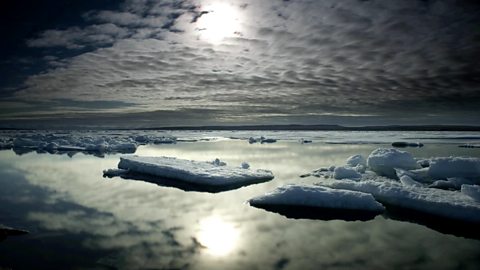
Web exclusive: 大象传媒 team used lightweight flexible solar panels to help power kit
骋辞谤诲辞苍鈥匓耻肠丑补苍补苍鈥卆苍诲鈥卆蝉蝉颈蝉迟补苍迟鈥卌补尘别谤补尘补苍鈥匨颈肠丑补别濒鈥匓别肠办别谤鈥卭苍鈥卹别诲耻肠颈苍驳鈥匓叠颁'蝉鈥卌补谤产辞苍鈥卛尘辫补肠迟.
The effects are very noticeable. Most glaciers in the area are showing signs of ice-loss, sea-ice cover is diminishing, and climate patterns have been unusually warm, particularly in the last two decades. The air is becoming much more humid, resulting in greater snowfall and deeper winter snowpack – creating the paradoxical result that a warmer high Arctic is also snowier.
While warmer temperatures and more snow in the desert may sound like a welcome reprieve for wildlife, it’s actually highly detrimental. Scientists in Greenland and Canada have noticed an increase in muskoxen deaths from starvation after heavy snowfall winters. This thicker snow cover makes it harder for the muskoxen to dig and forage for food during winter.
Ultimately, this could lead to fewer muskoxen - the wolves’ main source of prey. How this will affect the wolves is unclear. Arctic wolves are great generalists, able to survive on a variety of food such as birds, hares, and other small mammals. It could be that fewer muskoxen will force wolves to increase their dietary intake of other animals in order to support themselves, but this depends on how available these other options are.
Whatever the future holds for Ellesmere’s wolves, living up close to these amazing predators leaves you with a profound respect for the hardships they endure, and with hope for their continued survival.

